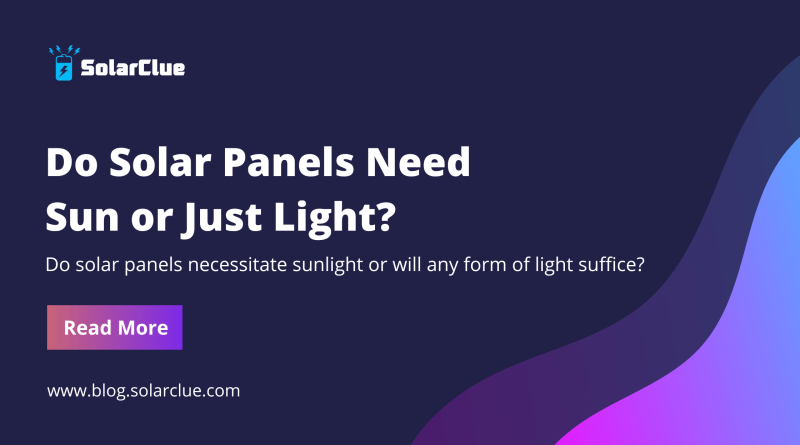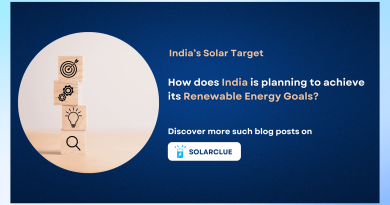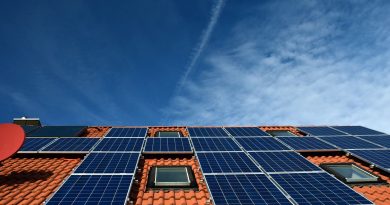Do Solar Panels Need Sun or Just Light?
Solar panels are an increasingly popular source of renewable energy, but there is often confusion about whether they need direct sunlight to function effectively. This comprehensive blog post will delve into the science behind solar energy conversion, the impact of various light conditions on solar panels, and how to optimize their placement for maximum energy production even in areas with limited sunlight.
Table of Contents
- 1 The Science Behind Solar Energy Conversion
- 1.1 The Impact of Different Light Conditions on Solar Panels
- 1.1.1 Indirect Light
- 1.1.2 Shade
- 1.1.3 Cloudy Weather
- 1.1.4 Light Intensity and Its Effect on Energy Output
- 1.1.5 Maximizing Solar Panel Output in Various Weather Conditions
- 1.1.6 The Role of Solar Panel Technology in Low-Light Conditions
- 1.1.7 Common Misconceptions About Solar Panels and Sunlight
- 1.1.8 The Importance of Considering Location and Climate for Solar Panel Installation
- 1.1.9 The Future of Solar Technology and Its Potential for Low-Light Environments
- 1.2 Conclusion
- 1.3 FAQs
- 1.1 The Impact of Different Light Conditions on Solar Panels
The Science Behind Solar Energy Conversion
Understanding how solar panels work starts with the photovoltaic (PV) effect, the process by which solar cells convert sunlight into electricity. Photovoltaic cells, typically made of silicon, absorb photons from sunlight, which then knocks electrons loose from their atoms, generating a flow of electricity. This electricity is captured by the cells and can be used to power homes and businesses.
The Impact of Different Light Conditions on Solar Panels
While direct sunlight is ideal for maximum efficiency, solar panels do not strictly require it to generate power. They can still function under various light conditions, including indirect light, shade, and cloudy weather.
Indirect Light
Indirect light occurs when sunlight is diffused, such as through clouds or reflected off surfaces. While the energy output in indirect light is lower than in direct sunlight, solar panels can still generate electricity. The efficiency drop depends on the thickness of cloud cover and the angle of light diffusion.
Shade
Shade has a more significant impact on solar panel performance. Partial shading can reduce the output dramatically because shaded cells can become “bottlenecks” for the electrical current. Modern solar panels often include bypass diodes that help minimize power loss in shaded conditions.
Cloudy Weather
Cloudy weather reduces the amount of sunlight reaching the panels but does not stop energy production. Solar panels can still produce between 10-25% of their typical output on a cloudy day, depending on cloud density and type.
Light Intensity and Its Effect on Energy Output
Light intensity, or irradiance, is a crucial factor in determining solar panel efficiency. Higher light intensity means more photons striking the photovoltaic cells, resulting in higher energy output. Conversely, lower light intensity leads to reduced energy production. The angle of the sun, time of day, and geographic location all affect light intensity.
Maximizing Solar Panel Output in Various Weather Conditions
To optimize solar panel output, consider the following strategies:
- Optimal Placement: Position panels to receive the maximum possible sunlight throughout the day, typically facing south in the Northern Hemisphere and north in the Southern Hemisphere.
- Tilt Angle: Adjust the tilt angle of the panels to match the latitude of your location. This ensures they capture the maximum amount of sunlight year-round.
- Avoid Shading: Install panels in areas free from obstructions like trees, buildings, and other structures that can cast shadows.
- Maintenance: Keep panels clean and free from debris, which can block sunlight and reduce efficiency.
The Role of Solar Panel Technology in Low-Light Conditions
Advancements in solar panel technology have made it possible to improve efficiency even in low-light conditions. Some of these technologies include:
1. Bifacial Panels: These panels can capture light on both sides, increasing overall energy production by utilizing reflected light from surfaces like rooftops or the ground.
2. Thin-Film Solar Cells: These are more flexible and lightweight than traditional silicon cells and can perform better in diffused light conditions.
3. Multi-Junction Cells: These cells can capture a broader spectrum of light, increasing efficiency by using different materials to absorb various wavelengths.
Common Misconceptions About Solar Panels and Sunlight
There are several misconceptions about solar panels that can deter potential users:
Myth: Solar panels do not work in cloudy weather.
Reality: Solar panels do work in cloudy weather, albeit at reduced efficiency.
Myth: Solar panels are ineffective in cold climates.
Reality: Solar panels can be more efficient in colder temperatures since excessive heat can reduce their efficiency.
Myth: Only rooftops can house solar panels.
Reality: Solar panels can be installed on the ground, walls, and even on vehicles, as long as they receive adequate sunlight.
The Importance of Considering Location and Climate for Solar Panel Installation
When installing solar panels, it’s essential to consider the local climate and geographical location. Factors like average sunlight hours, seasonal variations, and potential shading from nearby structures should be taken into account to ensure optimal performance.
The Future of Solar Technology and Its Potential for Low-Light Environments
The future of solar technology looks promising, with ongoing research focused on improving efficiency in low-light environments. Innovations like perovskite solar cells, organic photovoltaics, and hybrid systems are paving the way for more effective solar energy solutions that can operate efficiently regardless of light conditions.
Conclusion
Solar panels do not require direct sunlight to function, but their efficiency is maximized under optimal light conditions. By understanding the impact of different light conditions, optimizing panel placement, and staying informed about technological advancements, you can ensure that your solar energy system performs effectively even in areas with limited sunlight.
Here at SolarClue®, we offer a smart, practical, and “beautiful” solution. You will be answered for all the questions related to Solar.
We provide all kinds of brands that are the Best Solar panels in India.
If you are the one who is planning for the solar power system. Don’t hesitate to contact our team!
Looking forward to empowering you with solar energy, just like hundreds of our other clients!
FAQs
1. Do solar panels work at night?
No, solar panels do not produce electricity at night. They require sunlight to generate power. However, energy stored in batteries during the day can be used at night.
2. Can solar panels generate electricity on rainy days?
Yes, solar panels can generate electricity on rainy days, though their efficiency will be lower compared to sunny days due to reduced light intensity.
3. What happens if my solar panels are partially shaded?
Partial shading can significantly reduce the efficiency of solar panels. Modern panels often include bypass diodes to minimize power loss in shaded conditions.
4. How can I maintain my solar panels to ensure maximum efficiency?
Regularly clean the panels to remove dust, dirt, and debris. Ensure they are not obstructed by shading from trees or other structures.
5. Are there solar panels specifically designed for low-light conditions?
Yes, advancements in technology have led to the development of solar panels that perform better in low-light conditions, such as bifacial panels and thin-film solar cells.



